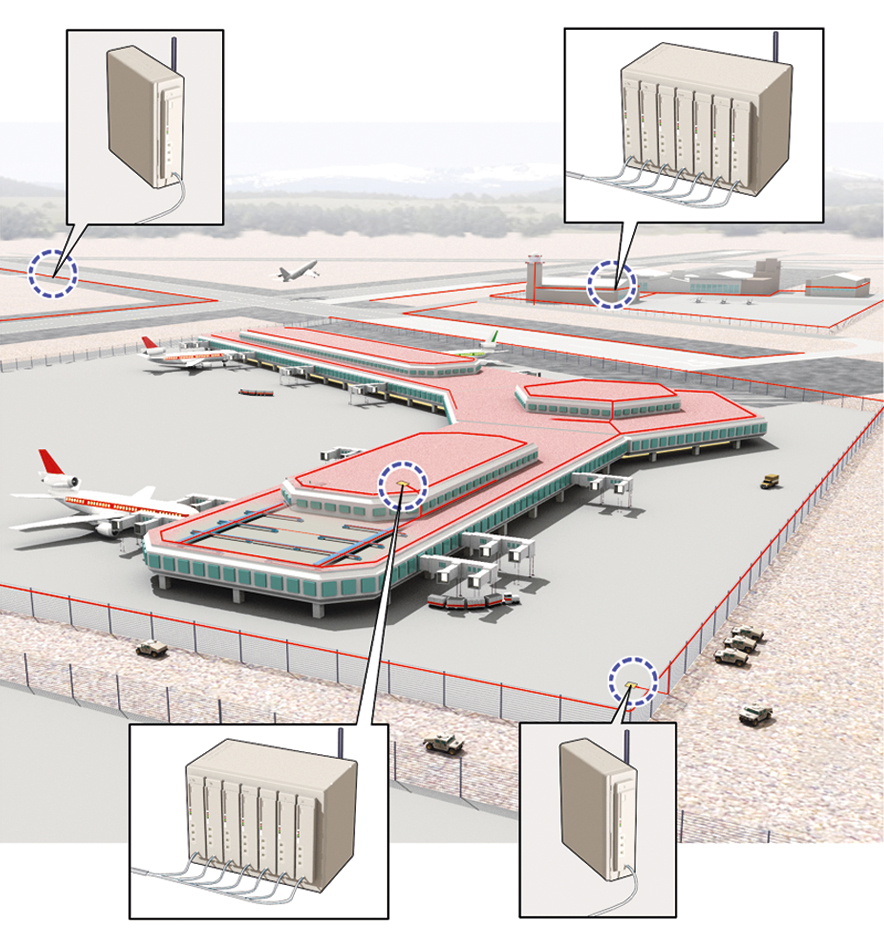
Chemical-Sensing Cables Detect Potential Threats
Originating Technology/NASA Contribution
As fleets of aircraft age, corrosion of metal parts becomes a very real economic and safety concern. Corrosive agents like moisture, salt, and industrial fluids—and even internal problems, like leaks and condensation—wear away and, especially over time and repeated exposure, begin to corrode aircraft.
Costs of repairs, which often involve replacing entire panels, downtime for fleet craft, and the potential loss of use of a vehicle all contribute to the economic concerns. In the United States alone, this is a multibillion dollar problem. In terms of safety, corrosion can be so widespread as to cause problems with the structural integrity of the craft, but it can also be just as dangerous when localized, like eating away at electrical wires or rusting away at crucial landing gear components.
NASA is invested in the development of new materials and material coatings to retard and prevent corrosion, but it is also researching methods for monitoring corrosion on existing aircraft.
Partnership
Moisture can lead to corrosion in an aircraft, and altered pH can indicate that corrosion is occurring. Intelligent Optical Systems Inc. (IOS), of Torrance, California, completed Phase I and II Small Business Innovation Research (SBIR) contracts with NASA’s Langley Research Center to develop moisture- and pH-sensitive sensors to detect corrosion or pre-corrosive conditions. As opposed to typical inspection equipment, like ultrasound or X-ray imaging, this technique can warn of potentially dangerous conditions before significant structural damage occurs. This new type of sensor uses a specially manufactured optical fiber whose entire length is chemically sensitive, changing color in response to contact with its target. These sensor fibers, embedded directly in aluminum “lap joints,” have detected the location—to within 2 centimeters—and alkalinity of potentially corrosive moisture incursions.
Product Outcome
After completing the work with NASA, the company received funding through a Defense Advanced Research Projects Agency (DARPA) Phase III SBIR to develop the sensors further for detecting chemical warfare agents. The sensors proved just as successful at locating and identifying specific chemicals as they had been at detecting moisture and pH levels. The next stage of development involved working with the U.S. Department of Defense (DoD) to fine-tune the sensors for detecting potential threats, such as toxic industrial compounds and nerve agents. Through the DoD contract, the company has set up beta testing in major metropolitan areas.
In addition to the work with government agencies, Intelligent Optical Systems has sold the chemically sensitive fiber optic cables to major automotive and aerospace companies, who are finding a variety of uses for the devices, from the original corrosive-condition monitoring to aiding experimentation with nontraditional power sources.
Commercially marketed under the brand name DICAST (Distributed Intrinsic Chemical Agent Sensing and Transmission), these unique continuous-cable fiber optic chemical sensors use a glass core coated with a permeable indicator-doped cladding to achieve chemical sensitivity over their entire length. These fiber optic cables can be very long, providing an economical means of detecting chemical release in large facilities. They can be used in inexpensive alarm systems, which alert the user to a change in the chemical environment anywhere along the cable, or in distance-resolved optical time domain reflectometry systems to provide detailed profiles of chemical concentration versus length.
With a 10-second response time, the DICAST cables are able to detect agents used in chemical warfare, such as hydrogen cyanide and the nerve agents soman and sarin, as well as chlorine, hydrogen sulfide, and other industrial compounds. They are currently designed to operate in indoor environments and are intrinsically sensitive to select, individual chemicals. When any area along the length of a cable is exposed to the target chemical, the cable color changes, and a proprietary optoelectric system detects the change in light and alerts the user. The cable is sheathed in an air-permeable casing, which provides rugged protection against shear stress.
Uses for the DICAST cables abound in security and industrial applications. They can be used to protect buildings and structures, like subway stations, automotive tunnels, high-rise office buildings, arenas, and convention centers, when employed in ventilation ducts, stairwells, or even in large open spaces. The reduction in complexity and increased security provided by these continuous-cable chemical detection sensors make the DICAST system an ideal choice for these applications. A single cable running through a main return air duct, for example, is a more cost effective and efficient method for chemical detection than the installation of point sensors in each room’s inlet to that duct.
In addition to their alarm and protection capabilities, the cables are also ideal for collecting profiles of chemical agents after an incident and for monitoring decontamination. By setting up a grid of cables over a contaminated area, response and clean-up crews can generate an accurate picture of the types, location, and concentration of hazardous chemicals.
Similarly, the DICAST cables can also be used to effectively secure a perimeter or boundary, with a single sensor cable replacing dozens of point sensors with an effectiveness that could only be rivaled by placing the point sensors side-by-side along the length of the entire perimeter. Possible locations that could benefit from this application include airbases, ports, high-profile government installations, and facilities that either store or destroy chemical warfare agents. According to the company, the cables could also be used to create a ring of protection around large outdoor gatherings.
Industrial applications, in addition to the original uses of moisture and corrosion detection in aircraft, include detection of non-lethal chemicals, such as leaks in long-haul water or petrochemical pipelines, pipes, and fluid transfer lines, and in refineries and other industrial facilities. The moisture and corrosion detection, though originally developed for aircraft applications, can also be applied to ships and other structures, and can even be used to detect salt and moisture permeation in concrete.
DICAST® is a registered trademark of Intelligent Optical Systems Inc.
In addition to the work with government agencies, Intelligent Optical Systems has sold the chemically sensitive fiber optic cables to major automotive and aerospace companies, who are finding a variety of uses for the devices. Marketed under the brand name Distributed Intrinsic Chemical Agent Sensing and Transmission (DICAST), these unique continuous-cable fiber optic chemical sensors can serve in a variety of applications: Corrosive-condition monitoring, aiding experimentation with nontraditional power sources, as an economical means of detecting chemical release in large facilities, as an inexpensive alarm" systems to alert the user to a change in the chemical environment anywhere along the cable or in distance-resolved optical time domain reflectometry systems to provide detailed profiles of chemical concentration versus length."
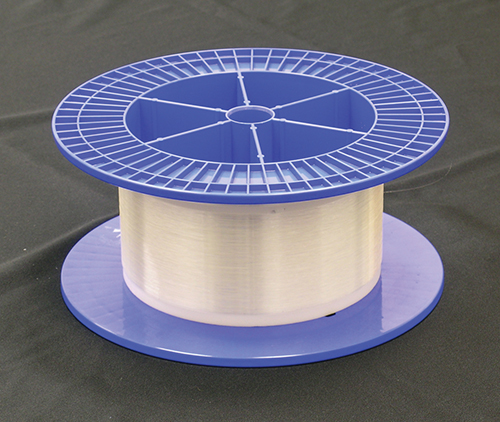
The DICAST system combines patented fiber optic cables that are chemically sensitive over their entire length, with an advanced network architecture for large-scale protection of critical assets.
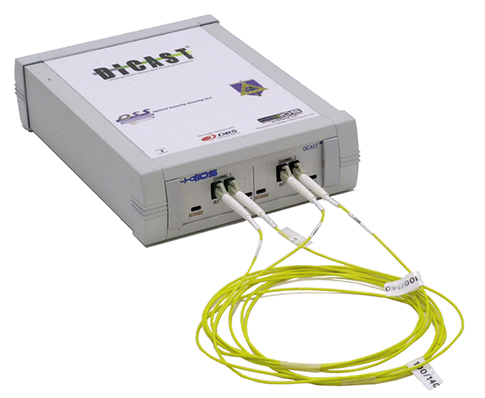
The sensor cables can be deployed in inexpensive alarm systems, which alert the user to a change in the chemical environment anywhere along the cable, or in sophisticated distance-resolved systems to provide detailed profiles of chemical concentration versus length.
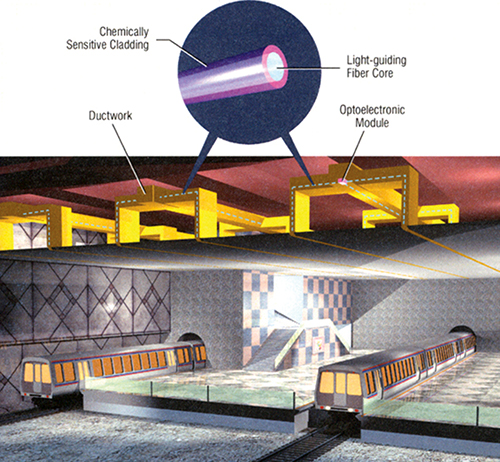
The cable systems can be used for building and structure protection, such as in ventilation ducts, stairwells, and large open spaces in subways, high-rise buildings, arenas, convention centers, and automotive tunnels.
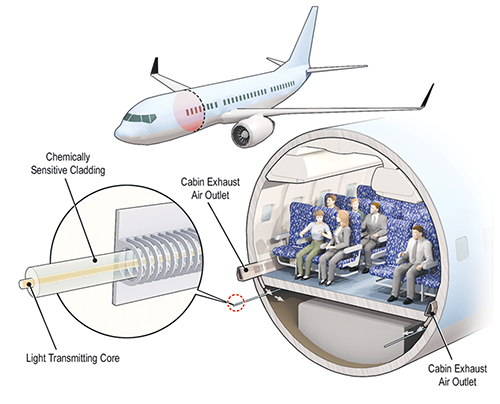
DICAST cable systems can be used on aircraft for passenger cabin protection.

DICAST chemical-sensing fiber optic cables provide complete indoor and outdoor protection for large facilities.













